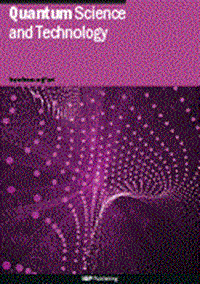Classical shadows with improved median-of-means estimation
IF 5
2区 物理与天体物理
Q1 PHYSICS, MULTIDISCIPLINARY
引用次数: 0
Abstract
The classical shadows protocol, introduced by Huang et al (2020 Nat. Phys.16 1050), makes use of the median-of-means (MoM) estimator to efficiently estimate the expectation values of M observables with failure probability δ using only measurements. In their analysis, Huang et al used loose constants in their asymptotic performance bounds for simplicity. However, the specific values of these constants can significantly affect the number of shots used in practical implementations. To address this, we studied a modified MoM estimator proposed by Minsker (2023 Proc. 36th Conf. on Learning Theory (PMLR) 195 5925) that uses optimal constants and involves a U-statistic over the data set. For efficient estimation, we implemented two types of incomplete U-statistics estimators, the first based on random sampling and the second based on cyclically permuted sampling. We compared the performance of the original and modified estimators when used with the classical shadows protocol with single-qubit Clifford unitaries (Pauli measurements) for an Ising spin chain, and global Clifford unitaries (Clifford measurements) for the Greenberger–Horne–Zeilinger state. While the original estimator outperformed the modified estimators for Pauli measurements, the modified estimators showed improved performance over the original estimator for Clifford measurements. Our findings highlight the importance of tailoring estimators to specific measurement settings to optimize the performance of the classical shadows protocol in practical applications.改进中位数估计的经典阴影
Huang等人(2020 Nat. Phys.16 1050)引入的经典阴影协议,利用平均中位数(MoM)估计器,仅使用测量值有效地估计M个具有失效概率δ的可观测值的期望值。在他们的分析中,Huang等人为了简单起见,在他们的渐近性能界中使用了松散常数。然而,这些常数的特定值会显著影响实际实现中使用的镜头数量。为了解决这个问题,我们研究了Minsker (2023 Proc. 36 Conf. on Learning Theory (PMLR) 195 5925)提出的一个改进的MoM估计器,该估计器使用最优常数并涉及数据集上的u统计量。为了有效估计,我们实现了两种类型的不完全u统计估计器,第一种基于随机抽样,第二种基于循环置换抽样。我们比较了原始估计器和改进估计器在使用经典阴影协议时的性能,该协议具有单量子位Clifford酉元(泡利测量)用于Ising自旋链,以及全局Clifford酉元(Clifford测量)用于greenberger - horn - zeilinger状态。虽然原始估计器在Pauli测量中优于改进的估计器,但在Clifford测量中,改进的估计器比原始估计器表现出更好的性能。我们的研究结果强调了定制估计器以特定测量设置的重要性,以优化经典阴影协议在实际应用中的性能。
本文章由计算机程序翻译,如有差异,请以英文原文为准。
求助全文
约1分钟内获得全文
求助全文
来源期刊

Quantum Science and Technology
Materials Science-Materials Science (miscellaneous)
CiteScore
11.20
自引率
3.00%
发文量
133
期刊介绍:
Driven by advances in technology and experimental capability, the last decade has seen the emergence of quantum technology: a new praxis for controlling the quantum world. It is now possible to engineer complex, multi-component systems that merge the once distinct fields of quantum optics and condensed matter physics.
Quantum Science and Technology is a new multidisciplinary, electronic-only journal, devoted to publishing research of the highest quality and impact covering theoretical and experimental advances in the fundamental science and application of all quantum-enabled technologies.
 求助内容:
求助内容: 应助结果提醒方式:
应助结果提醒方式:


